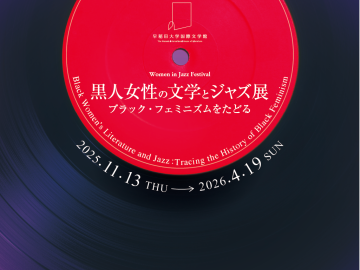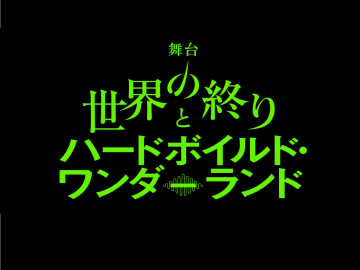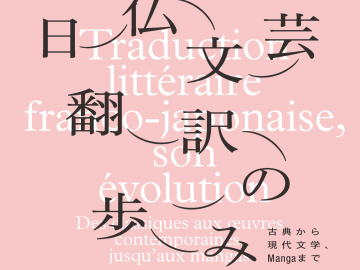Jazz and Literature: Scoring Sound/Cutting Language
As you are reading a novel, you suddenly hear a melody. You listen to a song, and it reminds you of part of a novel. You may have experienced something like this—this feeling that a novel and music are connected.
The novels of Haruki Murakami feature jazz, classical music, rock, pop, and much more. This exhibition focuses on jazz, introducing novels written by Murakami, as well as Hiroyuki Itsuki, Yasutaka Tsutsui, Kenzaburo Oe, Yumiko Kurahashi, and Kenji Nakagami. We’ll explore Japanese jazz culture as it was seen in the 1960s and 70s, as well as the relationship between jazz/jazz cafés and novelists of the time.
Materials related to the jazz café run by Murakami, Peter Cat, will also be on display. We hope you enjoy the connections between jazz and literature.
- May 20th, 2022 ― August 28th, 2022
- 2F Exhibition Room
- Organizer : The Waseda International House of Literature
- Cooperation : The Yanai Initiative for Globalizing Japanese Humanities
Prologue:The Transformation of Jazz
From the end of WWII to the end of the 1950s, the word jazz in Japan meant “the entirety of popular music from the United States.” Under the postwar Allied Occupation of Japan, “swing jazz”—or American popular dance music—gained popularity through radio programs broadcast by Occupation forces. Beginning in 1948, bebop records (the origin of what we think of today as modern jazz) were introduced and became the eclectic musical taste for those resistant to swing. After 1950, although swing was still the norm, musicians such as Shotaro Moriyasu and Toshiko Akiyoshi began studying bebop in earnest. Bebop and other styles of modern jazz began to spread among musicians and listeners as early as the late 1950s.
The popularization of jazz cafés allowed everyday people to listen to the latest imported records, which were expensive and difficult to purchase. They also became hubs for information on jazz. As people listened to recently recorded records, jazz became more popular as a form of contemporary music.
Side A: Jazz Culture of the 1960s and 70s
1. Jazz & Novels
The late 1950s were turbulent times, seeing protests against the Japan-US Security treaty, increasing student activism, and other upheavels. In response, jazz took on the role of a politicized, avant-garde form of contemporary music, rather than being merely popular music from the United States.
Side A introduces the work of five novelists who turned towards jazz for any number of reasons. Kenji Nakagami sought to take on jazz as a methodology rather than as a literary subject. Hiroyuki Itsuki attempted to express the “live” feeling of jazz. Yumiko Kurahashi captured the gendered aspects of jazz culture from her perspective as a woman. Yasutaka Tsutsui composed sentences with unique jazz-inspired rhthyms. And Kenzaburo Oe, contemplated jazz from a racial and political perspective.
2. The Jazz Café as Cultural Hub
The mid-1930s in Japan witnessed the golden age of prewar “music cafés,” which could be considered predecessors to jazz cafés. Some of these music cafés specialized in one type of music, such as classical or jazz, while others played a variety of music regardless of genre. Music cafés specializing in jazz at this time also played tango records, drawing influence from the music played in contemporary dance halls.
In the 1950s, young musicians became increasingly interested in studying music, not just “appreciating” it. Toshiko Akiyoshi and Sadao Watanabe, for example, focused on transcribing bebop in this period, copying down solo parts as they listened to records and quoting them in their own performances. Entering the 1960s, modern jazz became one part of the “education” of university students in the midst of student protests and uprisings. Jazz cafés played the role of a sort of jazz “school.” Here, students did not just listen to music, they established their identity as a person of culture.
Jazz Café Etiquette (from the Jazz and Café Freaks website)
・Do not talk unless there is an earthquake or fire. (Some cafés allow talking, but please pay attention to the atmosphere of the café when you first enter.)
・If the staff assign you a seat, sit there.
・If you are in the café for more than two hours, place a new order or leave.
・Set your phone to silent mode.
・Some cafés allow requests. They will have request notebooks available for patrons. (MEG and the now-defunct Swing are good examples.)
・Don’t fret if the coffee is bad. (And if the coffee is good, don’t make a scene.)
Side B: Haruki Murakami & Music
3. Murakami & Records
Murakami is a well-known record collector. When he was still a university student, he ran the jazz café Peter Cat in Kokubunji. Later Murakami moved Peter Cat to Sendagaya. Even after becoming a full-time writer, Murakami translated the biography of tenor saxophonist Stan Getz and a collection of essays o pianist Thelonious Monk. He also spins records while translating, making Murakami and jazz inseparable.
One way to tell that Murakami considers the sound of original analog recordings essential: his radio show “Murakami Radio” features recordings of records transferred to digital WAV data. Side B introduces Murakami’s childhood encounters with music, as well as highlighting his stance towards music.
4. Peter Cat as Creative Site
Murakami started the jazz café Peter Cat in Kokubunji in 1974 while attending Waseda University. Here, he could listen to his favorite music from night til morning. He worked hard to save money, and borrowed from wherever he could, in order to open the café.
In April 1978, Murakami went to watch a Yakult Swallows vs. Hiroshima Carp game at Jingu Baseball Stadium. The moment Dave Hilton hit a double, Murakami had the idea of writing of novel. He bought manuscript paper and a fountain pen. In the hours after finishing his work at the café—between closing and dawn—he began writing a novel at Peter Cat’s kitchen table. In about half a year, he had completed his debut work, Hear the Wind Sing. He sent the manuscript to the literary magazine Gunzo and won the 22nd Gunzo Prize for New Writers in May 1979. Pinball, 1973, published in 1980, was also written in Peter Cat.
5. Music in Murakami’s Novels
Murakami’s novels feature a wide range of music, from jazz, to classical, to pop.
Hear the Wind Sing (1979): “California Girls” by the Beach Boys
Norwegian Wood (1987): “Norwegian Wood” by the Beatles
South of the Border, West of the Sun (1992): “South of the Border” by Nat King Cole, “The Star-Crossed Lovers” by Duke Ellington
The Wind-Up Bird Chronicle (1994): “Rossini: La gazza ladra (The Thieving Magpie) – Overture” by the London Symphony Orchestra
After Dark (2004): “Bakudan Juice” by Shikao Suga
Once you begin naming song titles, there is no end.
What music has left an impression on you?
Hiroyuki Itsuki (1932-)
Itsuki was born in Fukuoka Prefecture and spent his childhood on the Korean Peninsula. After repatriating, he studied at Waseda University while working various jobs and self-publishing novels. In 1966, he won the 1966 Shosetsu Gendai Prize for New Writers for Farewell to Moscow Misfits, whose main character and narrator was a once-famous jazz pianist. The following year, he won the Naoki Prize for Look at the Pale Horse. Since then, he has released many popular works, such as The Gate of Youth. 1967’s The Young Ones Will Aim to Walk in the Wilderness and other works featured Japanese and European jazz musicians.
Kenzaburo Oe (1935-)
Born in Ehime Prefecture. In 1958, while still a student at the University of Tokyo, he received the Akutagawa Prize for Prize Stock at the young age of 23, the youngest recipient at the time, and attracted attention as one of a new generation of writers. He published Our Times the following year, which depicts the impulsive lives of a jazz trio. He continued to write novels such as A Personal Matter and The Silent Cry and actively spoke out on the political situation of that era. In 1994, he won the Nobel Prize in Literature, the second Japanese person to do so following Yasunari Kawabata.
Yumiko Kurahashi (1935-2005)
Born in Kochi Prefecture. The Party, published in the Meiji University newspaper in 1960 while she was a student there, caught the eye of critic Ken Hirano. The same piece was reprinted in the literary journal Bungakukai and nominated for the Akutagawa Prize that year. Her long novel Blue Journeys, written after moving on to graduate school, received attention for her nouveau roman technique—and the novel depicts jazz cafés from all across Japan. Later novels, such as Adventures of Sumiyakisto Q and The Long Passage of Dreams, incorporated a wide variety of literary styles.
Yasutaka Tsutsui (1934-)
Born in Osaka Prefecture. After graduating from Doshisha University, he released the self-published sci-fi piece NULL while working as a salaryman. He went on to meet famous sci-fi writers Sakyo Komatsu and Shinichi Hoshi. He later became a full-time author and gained popularity for his unique style, which incorporated social satire and humor. He also pioneered experimental works such as Virtual Men, Dreamtree Hill Junction, Lipstick on an After-Image, and Gaspard in the Morning. In addition to the short anthology Jazz Novel, inspired by masterpieces of jazz, he has also written many novels depicting jazz and jazz cafés, such as Dixieland Daimyo and The Day of Further Attacks.
Kenji Nakagami (1946-1992)
Born in Wakayama Prefecture. After graduating from Shingu High School, he moved to Tokyo and lived a life immersed in Shinjuku jazz cafés. He became part of the coterie Bungei Shuto and began publishing novels and essays. In 1975, Nakagami received the Akutagawa Prize for The Cape, published in the literary magazine Bungakukai. He is highly regarded for his work that depicts the history of his relatives and his hometown of Shingu on the Kii Peninsula. This includes the spiritual sequel to The Cape, The Sea of Withered Trees. Nakagami was interested in music in general and portrayed jazz in many of his novels and essays.














